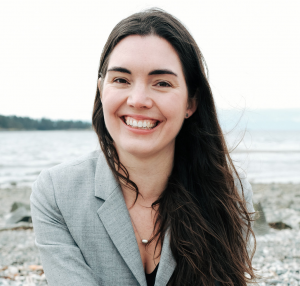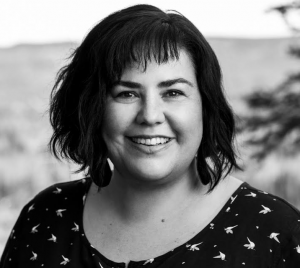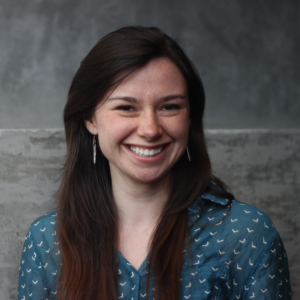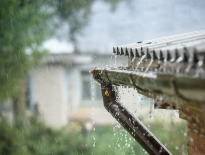Between now and the Living Future Conference in April, we will introduce some of the incredible practitioners, change-makers and innovators who are speaking at Living Future 2021. This week, we are featuring Joella Hogan and Alanna Quock.
Joella created and led the Heritage & Culture Department of the first Nation of Nacho Nyäk Dun. Alanna is a Tāłtān and Tlingit planner, designer, and creative problem solver. She is principal and founder of Regenative Design. The two, based in the Yukon and British Columbia respectively, worked collaboratively on the planning of a new Cultural Centre for the First Nation of Na-Cho Nyak Dun (FN NND) in Mayo, Yukon Territory.
Lily Rybarczyk: What does sustainability look like to you?
Joella Hogan: Our communities and this project are guided by traditional principles based on compassion for others and helping people in their journey of transformation into their real self. In Canada and in indigenous communities like mine in Mayo, we really draw on our cultural resiliency and connections to the land to support people through trauma, addictions, and other mental health issues. For me at the heart of sustainability are happy, healthy people grounded in culture and connected to the land.
Alanna Quock: There are different threads of stories that tell that for me. I stopped using the word sustainability after I finished my undergrad in 2006. I am now transitioning back into some of the stuff that I looked at in my undergrad, like protected areas, culturally appropriate protection, architecture. I feel like this connection of people to place and the importance of having us as Indigenous people actively engaged with our land and the land base is what brings life to its fullest expression. It’s that concept of grounding and place from an Indigenous perspective, but translating that into the built environment and architectures across scales.
I have a really hard time answering the question when people ask me what I do, but regenerative is part of my company’s name, Regenative Design. For me, it’s that sustaining is keeping things as they are and we need to add to that supporting life. Regenerative is the healing process, the supporting life process and that’s the really important piece that we need to get to that now, everywhere.
LR: What initially drew you both to your careers in sustainability and the built environment?
JH: In terms of environmental, which when I think of sustainability it always goes to the ecological thing first, when I was growing up I spent a lot of time hunting and fishing, out at the cabin. I started paying attention to more global issues and one of them was saving the manatees in Florida or protecting the rainforest, which seems so funny now. It was all about these global environmental issues happening around us, not paying attention to what was local.
When it came time to decide what to do for university, I didn’t have a full grasp of really what the opportunities were in the environmental field. One of the professors at the University of Northern British Columbia recommended environmental planning. I had no idea what that was but I knew that I wanted to be a part of change and forward-thinking, not reacting to environmental things. I also knew at that point that I would always come back to the north. That’s why I wanted a better understanding of global issues, how these issues might impact the north, and also how decisions in the north can be a part of change and creating better communities. What I had seen around me was that if we didn’t have people that were connected to the land, of it, on the land then we weren’t making good decisions about land and culture. I wanted to be a part of supporting people to make better decisions around caring for the land.
AQ: I haven’t heard that story and I’m so happy to have heard it! Mine is a completely different context, but has a similar arc. I grew up in the Yukon. My dad was a biologist, my mom was a geographer but also worked in education.
I ended up going to McGill, and I ended up in a course called “Knowledge, Ethics and the Environment” the day of the course’s add/drop. It was three different sections, with three different professors, and one of them was stories of free Northern Cree worldview. This led me to the McGill School of Environment, where I ended up doing my undergrad on environment and development. Peter Busby came and did a lecture at McGill about the CIRS building at UBC. It was just a concept at that point, and it was going to be the first regenerative design building. I loved the idea of that and I wanted to get into architecture because buildings contribute so much waste and consume so much energy.
I went to UBC for my Master’s in Architecture. The green building talk wasn’t integrated and I was really expecting at this point that it would be integrated within everything, but it really wasn’t. My undergrad was development, and like Joella said we were always looking south. In our Indigenous communities, we basically have developing conditions, so I ended up shifting my lens back north. What I realized in architecture was yes we have the technology, we have the solutions, we have all these things that we do, but we don’t have the political will or the decision-making capacity within people to choose. This is where, for me, it came back to people and behavior, and I ended up focusing my research designing process to make a more meaningful process to get a product that actually works.
So, I thought it was about solving global warming and climate change but to do that we need to change the way we do buildings, but to change the way we do buildings we need to actually change behavior and the way that we design buildings.
LR: What does the theme of Unity + Inclusion mean to you?
JH: I feel like this is very much what we strive to do anyway, like so much of what Alanna said about inclusion and the process, from the beginning of this project we wanted to include as many voices as possible. We didn’t want to create a space where people didn’t feel welcome, we wanted to create a space where everyone felt like they matter and we wanted to include all of those voices. The other aspect is there is unity and inclusion, but also diversity and multiculturalism, and how that fits and making sure that what we do through design and the building and all of the work that we both do is reflecting all of that uniqueness.
AQ: The big thing that I think about right now is listening and belonging. In the process of doing this project we’re really trying to make explicit how we’re listening, and to truly engage, what does that actually mean. In the concept of regenerative development, how can the participants in the process actively design that process and engage in the design of that process? For me, this where the translation from the academic concept to actually doing it is so hard and I think this is what sets apart the work that we’re doing. We are really trying to take the time and create that space to develop the relationship that allows people to feel like they are involved and that they have ownership of the project, that they don’t feel separate from it. You need to be able to hold the discomfort, hold that space, then allow it to open up for people to come into the project. What I’m trying to do is translate the needs of the community, the needs of the architect team, and have them understand one another so that it then translates into a beautiful building that people feel like they belong to and supports them.
JH: So much of what Alanna said made me think about how what we’re striving to do is put the power back to the people, and that that is hard. When she talks about discomfort, for so long our people were just given buildings, “this is your house, this is your youth center, this is that.” Now we’re turning it back in, “What do you want? What do you want that building to look like? What do you want to be able to do there?” Asking all of those questions, and asking the right questions too, that are about like function as much as it is about form. We are taking our time to do this particular building in a slow way, to reflect, using other projects as a learning process. It’s really about putting that power power, but also the responsibility back on the people, so that the people have the opportunity to design the places and spaces that they want to be a part of, and live and work and play in.
LR: What do you hope people will take away from this session?
AQ: One concept that comes to mind is this idea that of cultural humility, the importance of having cultural humility and what we have to learn from indigenous ways of knowing and being. In the sustainability context, the Indigenous worldview understands everything as connected and understands everything in relationship. To me, that comes back to the beginning of where we need to re-establish our relationship to place, in all cultures, in all places, but it’s Indigenous communities that have that knowledge to share. I’m really hoping that in our session we can convey that in a modern context, this isn’t going back, this is moving forward, this is how we enact this way of being. Joella and I both have completely different stories. I’m re-establishing my connection to my own nation as an adult, and that’s ok. I still have something to share and I still have something that I know in my bones. When I drive north and I go through my territory, my heart beats differently, I feel such a connection. I feel like that’s what we need to share is this importance of that connection to the land and to place and how that understanding translates to the solutions that we need for the major challenges that we face as humanity. Relationships are really important to each other and to place.
Hear more from Joella and Alanna during “Enan ts’in Inna (Go Forward in a Good Way),” on April 21 at Living Future 2021!





